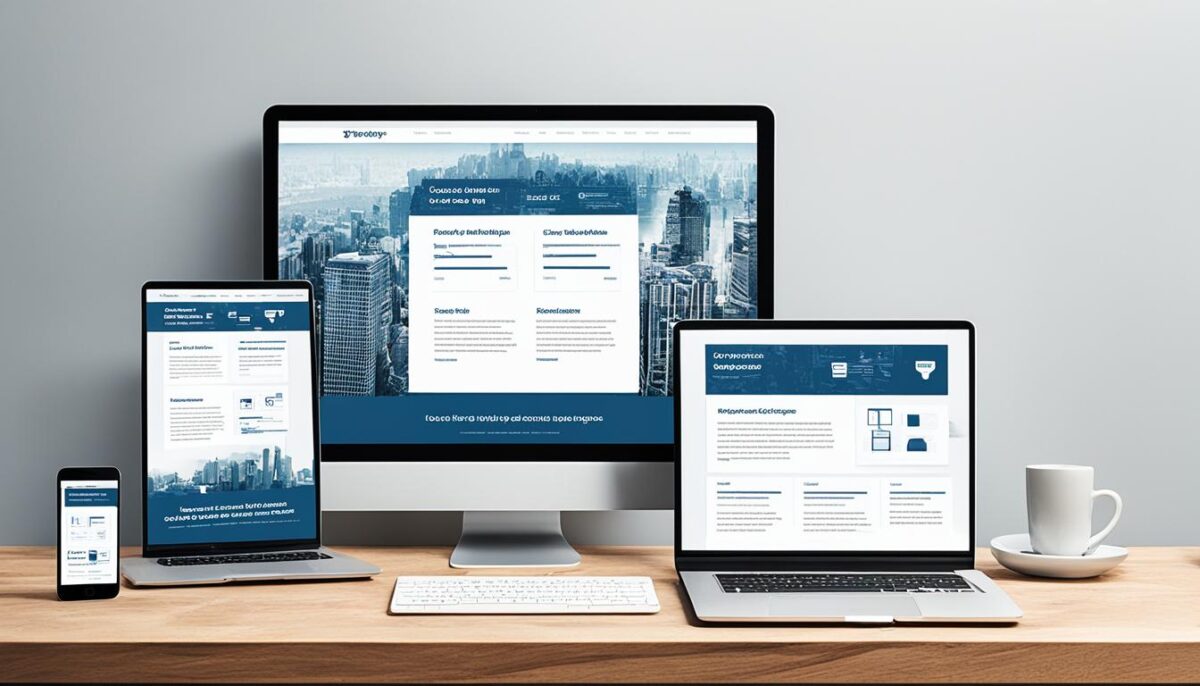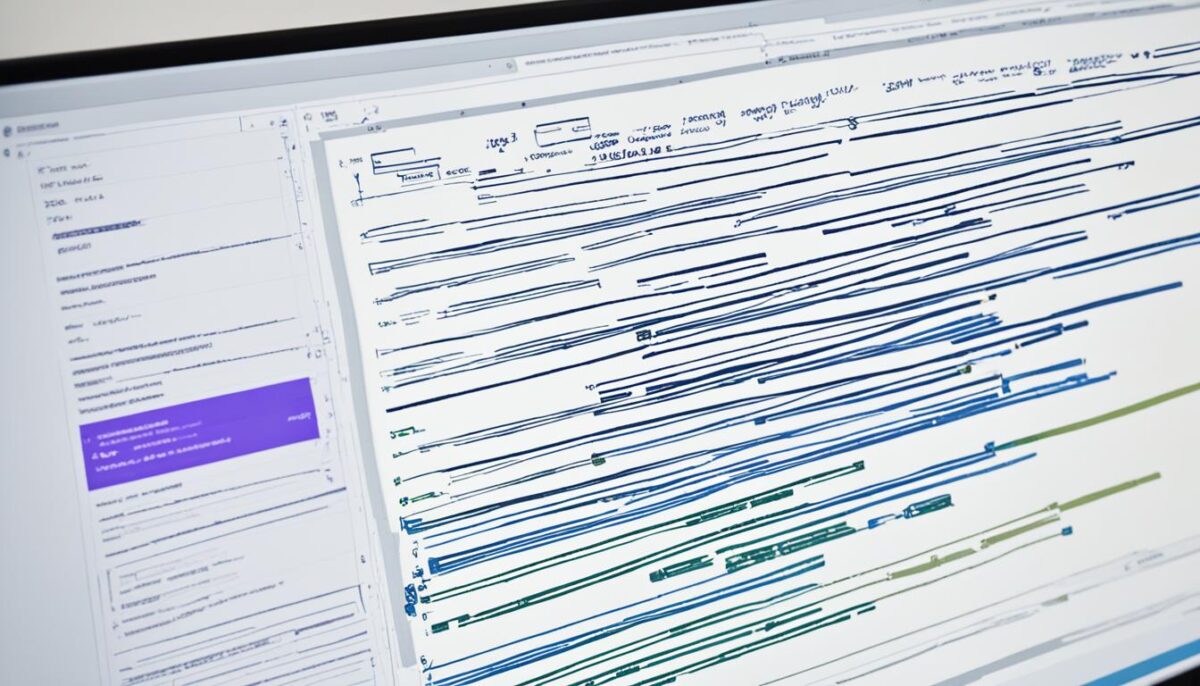Welcome to our comprehensive guide on how to develop websites and establish a strong online presence. In today’s digital age, having a well-designed and functional website is essential for businesses and individuals alike. Whether you’re a seasoned developer or just starting out, our expert advice and tips will help you navigate the website development process with confidence.
Building a website not only allows you to showcase your products or services but also enables you to connect with a global audience and expand your reach. With the right development approach, you can create a platform that effectively communicates your brand message, drives engagement, and generates valuable leads.
In the following sections, we will explore the basics of website development, including important concepts such as HTML, CSS, and responsive design. We will then dive into the planning and designing phase, discussing the significance of user experience and visual design. Finally, we will guide you through the development and launch of your website, highlighting the benefits of using a content management system (CMS) and the importance of thorough testing.
By the end of this guide, you will have gained the knowledge and skills needed to develop websites that not only captivate your audience but also drive your online success. Let’s get started on your website development journey!
Understanding the Basics of Website Development
To develop websites effectively, it’s crucial to have a solid understanding of the basics. In this section, we’ll delve into key concepts such as HTML, CSS, and responsive design, and explain how they contribute to the overall website development process.
HTML: Building Blocks of the Web
HTML (Hypertext Markup Language) is the foundation of every web page. It allows developers to structure the content of a website and define its various elements. By using HTML tags, you can create headings, paragraphs, lists, links, and more. HTML is a simple and powerful language that forms the building blocks of the web.
CSS: Bringing Style to Web Pages
CSS (Cascading Style Sheets) is responsible for the visual aspects of a website. It allows developers to control the presentation, layout, and design of web pages, making them visually appealing and user-friendly. With CSS, you can apply colors, fonts, margins, and other styles to HTML elements. It plays a crucial role in creating a consistent and attractive user experience.
Responsive Design: Optimizing for All Devices
In today’s mobile-first world, responsive design is essential. It ensures that websites adapt and display correctly on various devices and screen sizes, including desktops, laptops, tablets, and smartphones. By using CSS media queries and flexible layouts, developers can create websites that provide an optimal user experience across different devices.
Responsive design allows websites to reach and engage users across multiple platforms. It ensures that your content is accessible and visually appealing, regardless of the device being used.

With a solid understanding of HTML, CSS, and responsive design, you’ll have the necessary foundation to develop websites that are well-structured, visually appealing, and adaptable to different devices. Now, let’s explore the planning and designing phase of website development in the next section.
Planning and Designing Your Website
During the website development process, the planning and designing phase holds significant importance. This is the stage where you lay the foundation for a seamless user experience and create visually appealing designs that represent your brand identity.
One crucial aspect of website planning is understanding the user experience. By considering how users will interact with your website, you can ensure their journey is intuitive and enjoyable. A well-designed user experience plays a key role in attracting and retaining visitors, ultimately leading to higher conversion rates.
Wireframing is an essential step in the planning process. It involves creating a visual representation of your website’s structure and layout, allowing you to map out the various elements and functionalities. This step helps you identify potential issues and make necessary adjustments before diving into the visual design phase.
“Wireframing is like creating a blueprint for your website. It allows you to visualize the user flow, identify potential pain points, and ensure a seamless experience for your visitors.”
Once you have a solid wireframe in place, it’s time to focus on the visual design. This is where you bring your brand identity to life through colors, typography, imagery, and overall aesthetics. A visually appealing design not only catches the attention of users but also reinforces your brand’s message and values.
When working on the visual design, keep in mind factors such as readability, consistency, and responsive design. Your website should look great on various devices and screen sizes, ensuring a delightful experience for all users.
To further emphasize the importance of visual design, let’s take a look at an example:
| Benefit | Explanation |
|---|---|
| Enhanced Brand Perception | A visually appealing website creates a positive impression of your brand and enhances its overall perception. |
| Increased User Engagement | Users are more likely to engage with a visually pleasing website, leading to a higher level of interaction. |
| Improved Conversion Rates | A well-designed website increases trust and credibility, ultimately boosting conversion rates. |
By focusing on website planning, user experience, wireframing, and visual design, you can create a website that not only looks visually appealing but also provides an exceptional user experience. In the next section, we’ll dive into the development and launch of your website to bring your vision to life.
Developing and Launching Your Website
Now that you have a clear idea of the planning and design phase, it’s time to move on to the actual development and launch of your website. The website development process involves translating your design into a functional and user-friendly online platform.
One important tool that can simplify the development process is a content management system (CMS). A CMS allows you to manage and organize your website’s content easily, even if you have little to no technical knowledge. It provides you with a user-friendly interface to update and publish content, saving you time and effort.
Before launching your website, thorough testing is crucial to ensure everything is working smoothly. Test your website on different browsers and devices to ensure optimal performance and a seamless user experience. Check for broken links, loading speed, and responsiveness to guarantee that visitors can access your content without any issues.
Finally, it’s time to launch your website and make it live for the world to see! Double-check that all your content and functionality are working correctly. Consider implementing SEO strategies to optimize your website for search engines and drive organic traffic to your site. Once your website is live, regularly monitor its performance and make updates as needed to provide the best user experience.



